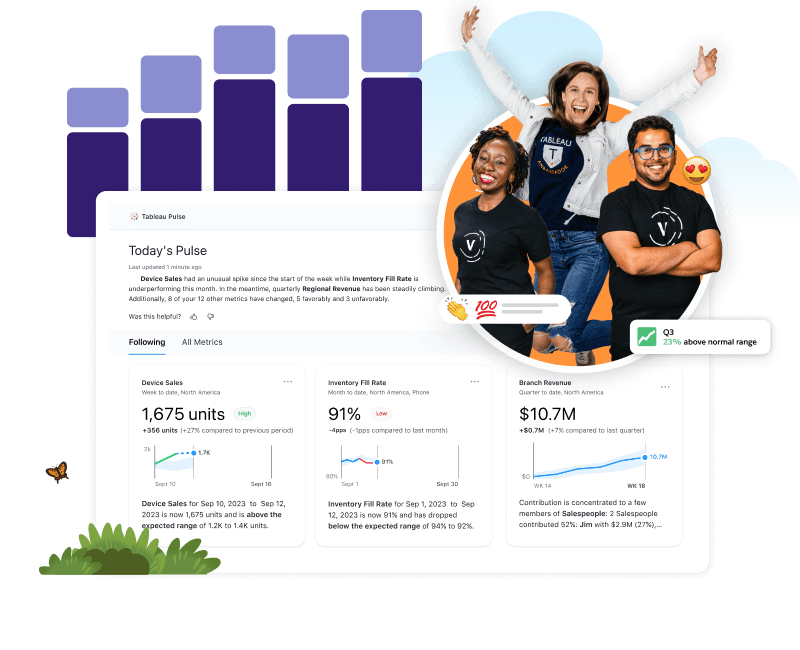Sales enablement is a strategic approach that involves providing your sales team with the resources, tools, training, and information they need to sell more effectively and efficiently.
It aims to empower salespeople to engage with potential customers, address their needs, and close deals successfully. Sales enablement encompasses various techniques and strategies, and here are some tips for implementing it in a small business:
1. Understand Your Buyer's Journey
Start by gaining a deep understanding of your target audience and their buying process. Identify the stages they go through, their pain points, and the information they seek at each stage. This insight will help you tailor your sales enablement efforts to meet their specific needs.
2. Create High-Quality Content
Develop relevant and valuable content, such as blog posts, eBooks, case studies, and videos, that align with each stage of the buyer's journey. This content can be used by your sales team to educate prospects and move them closer to a purchase decision.
3. Implement Sales Training
Provide comprehensive sales training to your team. Cover product knowledge, objection handling, sales techniques, and customer personas. Regular training sessions and workshops can keep your sales team up-to-date and motivated.
4. Leverage Sales Technology
Invest in sales tools and technology that can streamline processes and provide valuable insights. Customer relationship management (CRM) software, sales automation tools, and analytics platforms can help your sales team work more efficiently.
5. Sales Playbooks
Develop sales playbooks that outline best practices, objection-handling strategies, and step-by-step processes for different types of sales scenarios. These playbooks serve as valuable references for your sales team.
6. Lead Qualification Criteria
Clearly define lead qualification criteria to ensure your sales team focuses their efforts on leads most likely to convert into customers. This prevents wasted time and resources on unqualified prospects.
7. Sales and Marketing Alignment
Foster collaboration between your sales and marketing teams. Ensure that both teams are working towards the same goals and share insights and feedback regularly.
8. Feedback Loops
Establish feedback loops between the sales team and other departments, such as product development and customer support. This helps in identifying common customer issues and addressing them proactively.
9. Sales Enablement Metrics
Measure the effectiveness of your sales enablement efforts using key performance indicators (KPIs) such as conversion rates, deal velocity, and customer satisfaction. Adjust your strategies based on the data you collect.
Customer Relationship Management: Encourage your sales team to build strong relationships with prospects and customers. Effective relationship-building can lead to repeat business and referrals.
10. Continuous Improvement
Sales enablement is an ongoing process. Regularly assess your strategies and tactics, and be open to making adjustments based on changing market conditions and feedback from your sales team.
11. Incentives and Recognition
Motivate your sales team with performance-based incentives and recognition programs. A well-motivated team is more likely to drive sales growth.
12. Feedback Channels
Create channels for your sales team to provide feedback on what tools, resources, or training they need to perform better. Use this input to refine your sales enablement strategy.
In summary, sales enablement in a small business involves aligning your sales and marketing efforts, providing training and resources to your sales team, and continually refining your strategies based on data and feedback. It's about equipping your salespeople with the tools they need to succeed in a competitive marketplace.
13.Sales Enablement Plan
Creating a sales enablement plan is a collaborative effort that involves multiple team members working together to align strategies and achieve sales goals. Here's how teams typically strategize a sales enablement plan and the roles each team member may play in the process:
Leadership/Management Team
Define Objectives: The leadership team sets clear sales and revenue objectives for the organization. These objectives guide the overall sales enablement strategy.
Sales Team
Provide Insights: Sales representatives play a vital role in sharing their on-the-ground insights, such as customer feedback, common objections, and challenges they face during the sales process.
Identify Training Needs: Salespeople can help identify areas where additional training or resources are required to enhance their effectiveness.
Marketing Team
Content Creation: Marketers create high-quality content, including product collateral, case studies, blog posts, and videos that align with the buyer's journey.
Buyer Personas: Marketing teams develop and share buyer personas to help sales understand their target audience better.
Lead Generation: Marketing generates leads through various channels, which sales can then follow up on.
Product Development/Engineering Team
Product Knowledge: Ensure that the sales team has up-to-date and in-depth knowledge about the company's products or services.
Feedback Loop: Establish a feedback loop between the sales team and product development to address customer needs and product improvement opportunities.
Sales Enablement Team (if available)
Training Programs: Create and manage training programs that cover product knowledge, sales techniques, objection handling, and the effective use of sales tools.
Sales Playbooks
Develop and maintain sales playbooks that guide salespeople through various selling scenarios.
Tool Selection
Identify and implement sales enablement technology and tools that can streamline processes and provide analytics.
Analytics/Data Team (if available)
Performance Metrics
Track and analyze key performance metrics, such as conversion rates, deal velocity, and sales cycle length.
Feedback Analysis
Analyze feedback from customers, prospects, and the sales team to identify areas for improvement.
Customer Support Team
Customer Feedback
Gather and share customer feedback with the sales team to help them address customer concerns and build stronger relationships.
Product Knowledge
Ensure that customer support is well-informed about product updates and changes to assist customers effectively.
IT Team (if needed)
14. Sales Tools
Implement and maintain the technology stack used by the sales team, including CRM software, sales automation tools, and analytics platforms.
HR and Training Team
Onboarding: Handle the onboarding process for new sales hires, ensuring they receive comprehensive training on the company's products, sales processes, and tools.
Continuous Learning
Support ongoing training and development initiatives to keep the sales team up-to-date with industry trends and best practices.
Cross-Functional Meetings and Collaboration
Regularly scheduled cross-functional meetings allow team members to collaborate, share insights, and adjust strategies as needed.
Feedback and Iteration
Encourage team members to provide feedback on the sales enablement plan and its effectiveness. Use this feedback to make continuous improvements.
Documentation and Communication
Document the sales enablement plan and make it accessible to all team members. Clear and consistent communication ensures that everyone is aligned with the plan.
A successful sales enablement plan is a dynamic and collaborative effort that involves ongoing communication, analysis, and adjustments. It's essential for each team member to understand their role in supporting the sales team's success and for the organization to foster a culture of continuous improvement.
15.AI Tools to Use in Sales Enablement Planning
AI tools can play a significant role in enhancing sales enablement planning by providing data-driven insights, automating processes, and improving the overall effectiveness of sales teams.
Here are some AI tools that can assist in sales enablement planning:
CRM Systems with AI Features:
Salesforce's AI-powered platform offers predictive analytics, lead scoring, and automated email follow-ups, helping sales teams prioritize leads and opportunities.
HubSpot's CRM uses AI to provide lead scoring, email tracking, and personalized recommendations to improve sales processes.
AI-Powered Analytics and Reporting:
Tableau's AI-driven analytics platform can help sales teams visualize and analyze sales data, allowing for data-driven decision-making.
Domo's AI-driven business intelligence platform provides real-time insights into sales performance and customer behavior.
Sales Automation and Chatbots:
Drift offers AI-powered chatbots that engage website visitors, qualify leads, and schedule meetings with sales representatives.
Intercom's chatbot and messaging platform uses AI to automate sales and support interactions, improving customer engagement.
Predictive Analytics:
6sense uses predictive analytics to identify potential buyers, prioritize leads, and provide insights into buyer intent, helping sales teams focus on high-potential opportunities.
This platform uses AI to predict which leads are most likely to convert and provides recommendations on the best outreach strategies.
Sales Content and Asset Management:
Seismic uses AI to personalize sales content, making it easy for sales teams to access and share relevant materials with prospects.
Highspot's AI-powered platform helps sales teams find, customize, and deliver the right content to prospects at the right time.
Virtual Sales Assistants:
X.ai offers a virtual AI-driven scheduling assistant that helps sales teams schedule meetings efficiently by automating the scheduling process.
Clara Labs provides an AI-powered virtual assistant for scheduling and administrative tasks, allowing sales representatives to focus on selling.
Sales Forecasting:
InsightSquared uses AI to provide accurate sales forecasting, trend analysis, and predictive analytics to help sales teams set realistic goals and track progress.
Conversational AI for Sales Calls:
Gong.io uses AI to analyze sales calls and meetings, providing insights into sales conversations, buyer objections, and coaching opportunities.
Sales Training and Coaching:
Chorus.ai: Chorus.ai offers AI-driven conversation analytics and coaching, helping sales teams improve their communication and negotiation skills.
AI-Powered Email Marketing:
SendGrid, now part of Twilio, offers AI-powered email marketing solutions to help sales teams create and send personalized email campaigns.
These AI tools can assist in various aspects of sales enablement planning, from lead generation and qualification to sales content management, analytics, and customer engagement. When choosing AI tools for sales enablement, it's essential to align them with your specific sales goals and strategies to maximize their effectiveness.
SentryPC your first choice to monitor your employees
Have you heard about SentryPC
Watch SentryPC introductory video here
Why SentryPC is the best for your business?
Watch SentryPC Benefits
Find out more about SentryPC - A powerful Employee Monitoring software for your business











